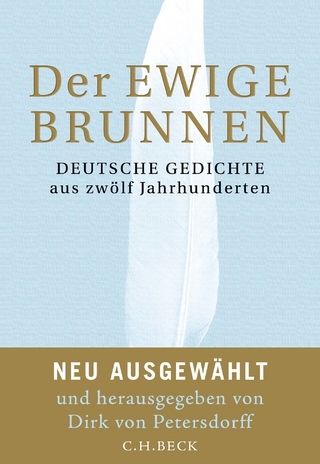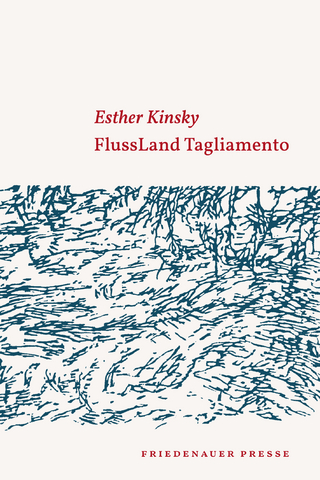
The Fragmentary Poetic
Eighteenth-Century Uses of an Experimental Mode
Seiten
2009
Lehigh University Press (Verlag)
978-1-61146-062-9 (ISBN)
Lehigh University Press (Verlag)
978-1-61146-062-9 (ISBN)
This volume is the first study of the mode of the fragmentary in eighteenth-century poetry. Revisiting traditional literary historiography, it offers a fresh account of the "Pindaric" impulse, a mode informing deliberate fragmentation.
The Fragmentary Poetic: Eighteenth-Century Uses of an Experimental Mode is the first study of the mode of the fragmentary in eighteenth-century poetry. Revisiting traditional literary historiography, it offers a fresh account of the "Pindaric" impulse, a mode informing deliberate fragmentation. It distinguishes itself from the work of Thomas McFarland, Marjorie Levinson (on the Romantic fragment poem), and Elizabeth Wanning Harries (on the prose fragment in the late eighteenth century) through its familiarity with the varied poetic landscape of the period. Through its immersion in the (still) under-researched field of eighteenth-century poetry and its inclusive, historicist approach, it introduces original but rarely discussed poems, thereby contributing to the mapping, and better understanding, of the growing canon of poetry.
Rather than being overtly contrasted with the preceptive poetics of early eighteenth-century Neoclassicism, the fragmentary impulse is read as integral to "new" genres such as the long-poem and the Pindaric ode. Its "amphibian" nature accommodates its transgeneric use in genres as varied as the ode and the epic, deploying the ruin as an emblem of its deliberate resistance to closure or the sublime to indicate rupture. The study discusses the ode, the long-poem, imitations of Spenser, Macpherson's "reinventions" of the epic, and poems engaging with (personal and cultural) memory and ruin. It further explores intermodal cooperation in productions ranging from satire to the epic.
Poets variously utilized the fragmentary as a mode reflecting human fallenness and the fragmentedness of human existence, but also (paradoxically) as evidence for original completeness and authenticity. In addition, the ruin as a cultural construct facilitated the recognition of the fragmentary as a valid mode. Detailed discussions of poems include works by authors ranging from James Thomson and Edward Young to James Macpherson, Charlotte Smith, and Wordsworth. Scholars of both eighteenth-century and Romantic period poetry will find The Fragmentary Poetic a useful guide to the generic complexity that characterizes the poetry of the eighteenth century. This account of the polymorphous nature of the fragment and its definitional and formal fluidity enables scholars to rethink eighteenth-century form and to appreciate a pervasive mode that found its most varying expression in the poetry of the period.
The Fragmentary Poetic: Eighteenth-Century Uses of an Experimental Mode is the first study of the mode of the fragmentary in eighteenth-century poetry. Revisiting traditional literary historiography, it offers a fresh account of the "Pindaric" impulse, a mode informing deliberate fragmentation. It distinguishes itself from the work of Thomas McFarland, Marjorie Levinson (on the Romantic fragment poem), and Elizabeth Wanning Harries (on the prose fragment in the late eighteenth century) through its familiarity with the varied poetic landscape of the period. Through its immersion in the (still) under-researched field of eighteenth-century poetry and its inclusive, historicist approach, it introduces original but rarely discussed poems, thereby contributing to the mapping, and better understanding, of the growing canon of poetry.
Rather than being overtly contrasted with the preceptive poetics of early eighteenth-century Neoclassicism, the fragmentary impulse is read as integral to "new" genres such as the long-poem and the Pindaric ode. Its "amphibian" nature accommodates its transgeneric use in genres as varied as the ode and the epic, deploying the ruin as an emblem of its deliberate resistance to closure or the sublime to indicate rupture. The study discusses the ode, the long-poem, imitations of Spenser, Macpherson's "reinventions" of the epic, and poems engaging with (personal and cultural) memory and ruin. It further explores intermodal cooperation in productions ranging from satire to the epic.
Poets variously utilized the fragmentary as a mode reflecting human fallenness and the fragmentedness of human existence, but also (paradoxically) as evidence for original completeness and authenticity. In addition, the ruin as a cultural construct facilitated the recognition of the fragmentary as a valid mode. Detailed discussions of poems include works by authors ranging from James Thomson and Edward Young to James Macpherson, Charlotte Smith, and Wordsworth. Scholars of both eighteenth-century and Romantic period poetry will find The Fragmentary Poetic a useful guide to the generic complexity that characterizes the poetry of the eighteenth century. This account of the polymorphous nature of the fragment and its definitional and formal fluidity enables scholars to rethink eighteenth-century form and to appreciate a pervasive mode that found its most varying expression in the poetry of the period.
Sandro Jung is professor of early modern British literature at Ghent University.
| Erscheint lt. Verlag | 1.12.2009 |
|---|---|
| Verlagsort | Cranbury |
| Sprache | englisch |
| Maße | 167 x 244 mm |
| Gewicht | 395 g |
| Themenwelt | Literatur ► Lyrik / Dramatik ► Lyrik / Gedichte |
| Geisteswissenschaften ► Sprach- / Literaturwissenschaft ► Anglistik / Amerikanistik | |
| Geisteswissenschaften ► Sprach- / Literaturwissenschaft ► Literaturwissenschaft | |
| ISBN-10 | 1-61146-062-X / 161146062X |
| ISBN-13 | 978-1-61146-062-9 / 9781611460629 |
| Zustand | Neuware |
| Haben Sie eine Frage zum Produkt? |
Mehr entdecken
aus dem Bereich
aus dem Bereich
Deutsche Gedichte aus zwölf Jahrhunderten
Buch | Hardcover (2023)
C.H.Beck (Verlag)
28,00 €


